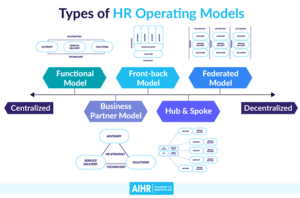Models are used in all sorts of business functions: supply chain, financial, sales and marketing, IT, or HR. Models help us organize the complex and give us labels for big ideas.
I eagerly clicked on McKinsey’s December 22, 2023 article, HR’s new operating model. Unfortunately, it turns out McKinsey overpromised with the article’s lead, “100 CHROs reveal how the HR operating model is changing to drive value in a volatile environment”. Instead, the article presents a framework that leaves out the classic HR models that continue to work today helping CHROs organize their teams for success.
In summary, McKinsey’s article lists five HR operating models that I describe later. My concern is that only the first model in McKinsey’s article is really a complete model. My view? The last four of McKinsey’s new models are just new methods on traditional HR practices. These new methods are worthy of analysis and deployment, but they are just variations on well-established HR practices. Featuring these methods as models potentially misleads the HR strategist into thinking that the new methods require an overhaul of the current operating models.
To illustrate my point, here is a short description of the classic HR operating models as explained by the Academy to Innovate HR, and depicted in this graphic:
The five classic HR operating models are:
- Business Partner models which feature four functional groups: HR Leaders, Business Partners, Centers of Excellence (CoEs), and Shared Service centers. This model is the basic Ulrich model, the most popular large enterprise HR model used today because it blends functional expertise in the CoE and Shared Service centers with the ‘customer focus’ and responsiveness of business partners dedicated to business units.
- Functional models are organized around HR skill specialties: recruiting, compliance, payroll, benefits, performance management, learning, etc. The functional model is very HR-centric and was the original form of the HR organization when HR functions grew into teams and required specialization.
- Front-back delivery models are a variation on the business partner model that supports customization of HR practices for different business units. This model is common in large diversified or vertically integrated firms.
- Hub and Spoke models are similar to the Front-back model but, unlike the Front-back model, delivery units (spokes) provide maximum localization, only relying on the centralized units (hub) for shared technology and services.
- Federated Models provide the most decentralized HR operating model. Each business unit has independent HR functions. Centralized HR still exists, but it is mostly as a coordinator of resources.
The McKinsey article presents five HR operating models, presented below. After each, I’ve included my ‘method vs. model’ comments.
Ulrich+
The Ulrich+ model is a McKinsey’s modernized version of David Ulrich’s 1995 model. The 1995 model split HR into four key functions.
- Strategic Business Partners
- Administrative Experts
- Change Agents
- Employee Champions
McKinsey’s Ulrich+ model is an adaptation of the classic model that changes the mix between the four key functions in response to today’s more complex HR context.
Comment: Ulrich has spent his professional career doing research, teaching and consulting to build a body of knowledge on organization theory that helps business leaders. His innovative model from 1995 is still in wide-spread use today, so a modernized version makes total sense.
Agile
The Agile model reduces the role of the business partner with an emphasis on consulting with top management with the CoE SMEs focused on data, DEI and workforce planning. Agile advocates stress faster execution of HR solutions by the business to prevent having classic HR slow progress.
Comment: Agile for HR is not new. Peter Cappelli and Anna Tavis wrote about using agile methods in their 2018 HBR article in which they cited several examples. Their advice is still relevant today. Agile is a method.
EX-Driven
The Employee Experience (EX) model borrows marketing’s customer journey and applies it to HR by allocating proportionally more resources towards ‘moments that matter for the employee’. Designing a best-in-class onboarding experience was cited as an example of an EX-driven HR operating model.
Comment: the idea of using an EX framework to assess how HR methods impact employees and the firm is terrific; just like the 1980’s innovation of the ‘customer experience’ has shaped marketing for almost 40 years. But the EX is an analytical framework, not an operating system. Deloitte’s 2021 HR blog post references the EX as a key factor in effective firms. CHROs use EX to inform and improve their HR operating models. EX is input to a model, not the model.
Leader-Led
The Leader-Led model transfers HR accountability to the business units for core process like hiring, onboarding, and learning by equipping line managers with HR tools and administrative support. The driver for this model is a firm’s need to overcome what might be considered HR’s classic shortcomings: too much oversight, slow response times, and a lack of business acumen.
Comment: Leader-led HR as described by McKinsey is an improvement initiative for the classic Federated Model. In the Federated Model, CHROs rely on the business units to deliver HR services. The McKinsey Leader-led model argues for equipping managers with HR capabilities, but the leader is still in the business unit, same model, different tooling. The Deloitte 2023 Global Human Capital Trends report does a better job of including leader-led themes into HR operating models by NOT calling out the leader-led approach as a new model; leader-led themes should be part of all HR operating models.
Machine-Powered
The Machine-Powered model uses AI, analytics, and machine learning methods to perform core HR tasks like selecting talent, assessing performance and development, and analyzing absence with the goal of better decision making and freeing HR leaders to support employees and leaders with advice and counsel.
Comment: There is no argument that using advanced technologies to augment or even replace legacy HR processes is good thing, but even in a fully automated HR process, the architects and managers of these technologies need to find the right balance between the business unit and HR. Finding that right balance, establishing the rules of engagement, working through implementation and ongoing training and feedback will be executed inside the existing HR operating models. Standing up ‘machine powered’ as a HR model is a bridge too far.
As HR professionals, we are well served by McKinsey’s article because it highlights important themes, but McKinsey’s Agile, EX, Leader-Led and Machine Powered HR operating models don’t rise to the level of abstraction that classic HR operating models do. Instead, we should look to see each of McKinsey’s last 4 models as being executed as part of any of the five classic models.
HR professionals, what are your thoughts?



